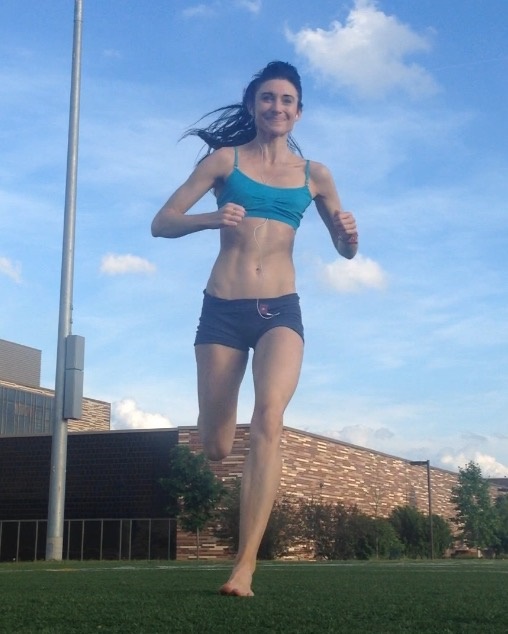If you suffer from lower leg injuries, such as medial shin splints which is pain concentrated on the inner side of the leg towards the ankle, you might not be landing on your forefoot correctly. You might be landing on the center of your forefoot instead of making initial contact with the ground closer to the outside edge of your forefoot.
Landing on the Outside of the Forefoot Helps Medial Shin Splints in Runners
A study by Willems et al. 2007 found that runners suffering from lower leg injury had higher medial pressure distribution in the forefoot and less peak pressure under the 5th metatarsal head as compared with uninjured runners. One explanation for the link between high medial forefoot pressure and medial shin splints in running is that landing on the center of the forefoot may evoke changes in pronation in way that causes more rearfoot movements and could lead to excessive torsion stress on the inner shin bone.
- The researchers found that the increased medial forefoot pressure was accompanied with excessive pronation which may lead to excessive eccentric traction to the plantar flexors, a group of foot muscles that physically link up to the medial and posterior shin. Over time, this excessive traction could lead to inflammation (Beck et al. 1994;Micheal et al.).
Although pronation is necessary to deflect bone stress during running (Hamill et al. 1992;McClay and Manal, 1992), landing on the outer-side of the forefoot gives you more controlled rearfoot pronation, making your shins a whole lot happier. Plus, most elite runners who use a forefoot strike make initial contact on the outer-edge of the forefoot with the ground. Given this distinction, it is no surprise that these runner rarely experience shin splints. Here are more reasons landing on the outside forefoot is the safest way to use your feet when you run.
More From Run Forefoot:
How Forefoot Running Prevents, Not Causes, Plantar Fasciitis
Running Shoes That Help You Run on Your Forefoot
What Supplements Should a Runner Take?
References:
BECK , B. R., L. R. OSTERNIG , and E. OREGON . Medial tibial stress syndrome: the location of muscles in the leg in relation to symptoms. J. Bone Joint Surg. 76AV1057–1061, 1994.
HAMILL , J., B. T. BATES , and K. G. HOLT . Timing of lower extremity joint actions during treadmill running. Med. Sci. Sports Exerc. 24:807–813, 1992.
MCCLAY , I., and K. MANAL . Coupling parameters in runners with normal and excessive pronation. J. Appl. Biomech. 13:109–124, 1997.
MICHAEL , R. H., and L. E. HOLDER . The soleus syndrome. A cause of medial tibial stress (shin splints). Am. J. Sports Med. 13:87–94, 1985.
Willems at el. Gait-Related Risk Factors for Exercise-Related Lower-Leg Pain during Shod Running. Med Sci Sports Exerc, 2007; 39(2): 330-339.
Bretta Riches
BSc Neurobiology; MSc Biomechanics candidate, ultra minimalist runner & founder of RunForefoot. I was a heel striker, always injured. I was inspired by the great Tirunesh Dibaba to try forefoot running. Now, I'm injury free. This is why I launched Run Forefoot, to advocate the health & performance benefits of forefoot running and to raise awareness on the dangers of heel striking, because the world needs to know.
Latest posts by Bretta Riches (see all)
- How to Train Yourself to Not Heel Strike When Running - 24/04/2024
- Cushioned Running Shoes Found to Be Bad for Ankles - 23/04/2024
- Forefoot Running and Achilles Pain - 19/04/2024

